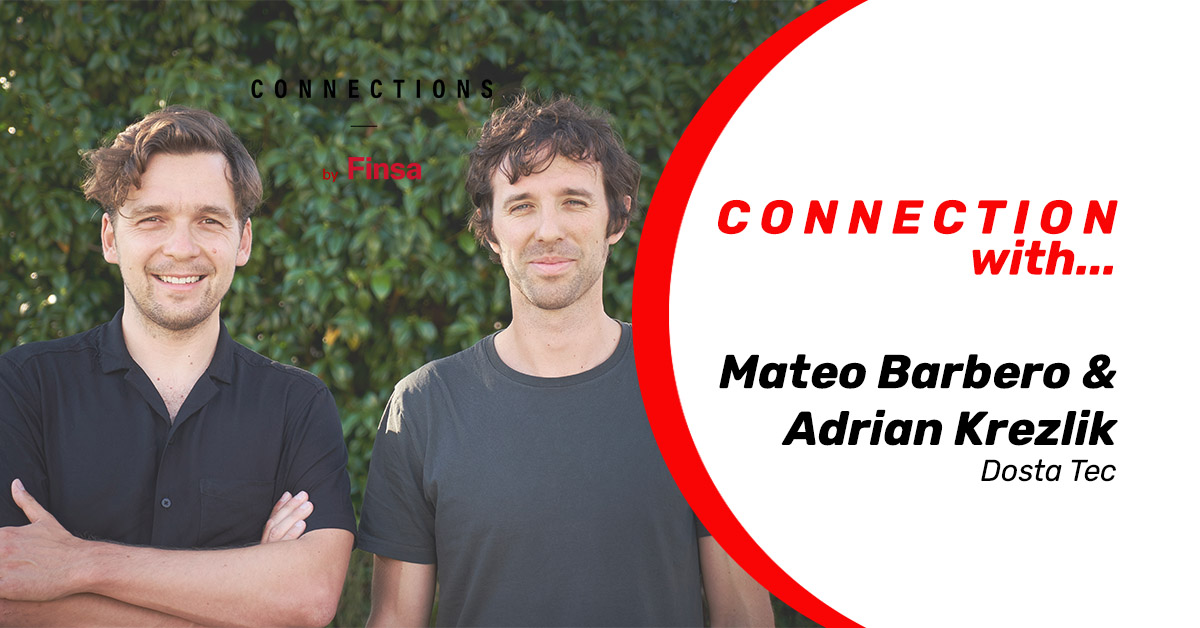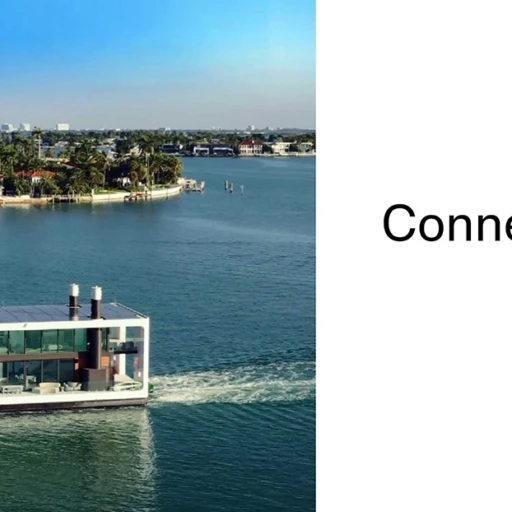One is Argentinian and an engineer. The other is Polish and an architect. Together, Mateo Barbero and Adrian Krezlik form Dosta Tec, an “environmentally sensitive” engineering and technology studio that the two opened in Porto in early 2022. After meeting a few years earlier on a Portuguese language course, they decided to join their professional paths when they realised they wanted to do the same thing: help transform the built environment, and do it well.
Committed to the decarbonisation of the entire life cycle of buildings, Krezlik and Barbero think and develop projects with an eye on the future generation, to promote the refurbishment of the building stock and its energy efficiency. They do this through technology, running computer simulations with which they predict, for example, the temperature of each room in a house throughout the year, the cost of the electricity bill or how many carbon emissions a building will be responsible for. “We have always tried to work with a regenerative and positive approach,” say the two founders of Dosta Tec.
In CONNECTION WITH… we interviewed them to find out more about their work and their views on the energy challenge in the construction sector

Dosta Tec provides design, energy modelling and simulation services. What is your goal considering that the building sector is responsible for 30% of final energy consumption and 25% of greenhouse gas emissions? You have quite a lot of work…
Adrian Krezlik: Yes. We came with the idea of participating in this movement that is happening today and giving our support much more technical than theoretical, to say exactly what are the tools we have today, what are the methods to reduce carbon in the operational part of the building and to look for materials that are low in carbon in the production part. What we are interested in is creating a positive impact on the environment with architecture. One of the most powerful elements is carbon, but we are not closed to other factors, we have a broader view on the crisis we are living today. Besides climate change, we always ask ourselves what we really want to do and what our impact is.
Mateo Barbero: We create recommendations to help developers, builders and architects find the best alternatives for their project priorities, often a combination of environmental, economic and human comfort objectives, and translate them into design decisions. We try to influence project owners to be aware of these benefits and avoid looking only at economic value.
The aim would then be to have nZEB (nearly Zero Energy Building) buildings. But progress is still slow, isn’t it?
A.K.: Actually what we would like is for all buildings to be positive energy. That’s how we like to work, creating positive impact. In other words, we do not want to do less wrong, we want to do it right. And doing it right means that we would like to be involved in projects that produce energy.
But in Spain, as in Portugal, the building stock is quite old and, on the other hand, there are still many new buildings with low energy efficiency. How can this be turned around? What is the right way forward?
M.B.: Regarding new buildings that are built badly, although the question is rather more complex than saying good or bad, the owner of the project must be clear about his or her priorities. Because whatever angle you look at you can always find something that justifies pursuing energy efficiency, whether it is savings in the operational cost of the building, or decarbonisation, or compliance with future regulations or standards under which, later, if it has not been properly adapted, the real estate asset will be less valuable. There is always a way to find an angle where energy efficiency is essential. And if a project owner, an investor, doesn’t see that, our job is a bit of convincing him or her what can be a beneficial priority for the project. At a general level, however, that change will come with regulations and incentives.
A.K.: For example, we have just finished a hotel project in Poland and the client’s question was whether we could reduce the energy consumption of the building by 30%. We solved it by looking for different ways to do it. And because it was also very important for the client, we reduced the operational energy of the building. In this case, we did not take into account the embodied energy of the building, they are two different things. But to come back to the question, new buildings are one thing and renovations are another. Right now, we are working on quite a big project in Lisbon and we are seeing that there are ways to actually apply some strategies to renovate a building from an energy point of view. The problem is that 70% of the housing stock in Europe is in need of energy renovation. In other words, we need to look for ways of renovating in order to reduce the energy consumption of the building. This is a big challenge that requires policy tools such as the Renovation Wave, an EU directive with incentives to refurbish the entire building stock across Europe that aims to double annual energy renovation rates over the next ten years, or programmes designed to improve the energy consumption of housing without compromising comfort and quality of life. We need to rethink all of this at a strategic level and then find ways to implement it properly.
So, from your point of view, which is better for the environment, the economy and human comfort: renovating or building from scratch?
M.B.: Renovating always.
A.K.: No doubt about it. We have to find the right formulas for renovation. In Europe, in general, everything is built with materials that were designed to be reused, so we have to find a way to renovate based on the idea of circular design, so as not to use many resources, but attacking the most fragile and vulnerable elements of buildings such as thermal bridges, windows, roofs… And also look for renewable energies for heating and air conditioning.
Why is the renovation of buildings to make them efficient still not taking off? In Spain there should be 120,000 per year and the reality is that barely a fifth of them are being achieved…
A.K.: Well, in many Spanish cities you can see incredible passive solutions, for example in Madrid or Vigo. But in Portugal the problem is the initial investment and the precariousness of the housing architecture that was built forty, sixty, eighty years ago. That’s why: you have to invest a lot at the beginning to obtain benefits that come later. This is a problem. Besides, until recently there was hardly any support and there was more emphasis on active solutions, whereas we prioritise passive solutions whenever possible.
M.B.: Yes, not resorting to active solutions is a very big challenge and then there are the constraints of each project, which affect the possibilities. In general, it is very difficult to move towards a completely passive building, especially in urban areas, especially where there is historical heritage. In Europe, there is a lot of regulation of facades and buildings. Therefore, the idea is to balance and find the optimal passive solutions for each location. It is not a question of inventing the wheel every time, but to take the best solutions from the existing environment and build something that is very close to a zero-energy or positive energy building, but it is not always possible to have a 100% passive house.
A.K.: It is about looking for specific solutions for each region, for each city or for each micro-climate. For example, here, in the north of Portugal and also in part of Galicia, there are solutions that are shared and, although there is a border, one country can learn from the other, know each other’s richness, and we are already seeing that solutions that exist and work in Galicia can be brought to Portugal because they make sense.
You carry out building projects for assessment and subsequent certification of their sustainability. Is this a service in demand, and is this an increasingly relevant issue in the real estate world?
M.B.: Yes, the demand for the certification support service has definitely grown significantly. Investors generally want to be sure that the building project will comply with the new decarbonisation requirements, because it adds concrete economic value to their projects. And the industry sees this as increasingly important because the end buyers, the people who are going to occupy those buildings, demand it. It is a combination of regulations and market demand, we are told by property developers.
A.K.: It seems that soon this type of labels and certifications of buildings will be very important to obtain a credit, to obtain financing. And the demand for this service is growing, we are being asked more and more, there is more and more interest.
You spoke earlier about the decarbonisation of the building stock – how can this be done and how can technology help?
A.K.: Technology helps us on the one hand to find the balance between operational and embodied carbon, I think it is a very important element to achieve that. Because what happens and what used to happen a lot is that many heating and cooling systems were installed that were very expensive from a carbon point of view, but the operational was very cheap. Now, with the right calculations, we can find this balance between one and the other. And don’t forget that this is the Iberian Peninsula and the climate is very different from Northern Europe. You have to think very locally.
M.B.: Yes, what we achieve with technology is, for example, to make a carbon project that is completely analogous to the economic project. That is to say, you have an investment that instead of being euros is tonnes of carbon and you see each year that passes, of the fifty years for which the project is calculated, how much carbon you saved, you have the differential and you compare alternatives, and you have a payback period, a return on your investment. And we do the same with the economic project. So the project owner can see the two in parallel. The reality is that they have to see it with equal importance. That’s what technology helps us with: to quantify and to predict. And with quantification and prediction we can make and give a complete analysis, not just say “this system is better than this one”, but “this is going to be your project”.
So decarbonising the entire life cycle of a building is not a pipe-dream, but something feasible.
M.B.: Yes, it is essential to have a solid methodology that allows us to quantify the carbon impact at every stage of the building’s life cycle, from the operational phase to supply, manufacturing and transport. Without that, it is very difficult to make effective design decisions. Each of these areas must be optimised by analysing alternatives that fit the reality of the project.
Within biomaterials, what role do you think wood plays?
M.B.: Wood is a product that is developing a lot, its use is growing a lot, especially in countries where it was not traditionally used as a structural material, and we are starting to see alternatives and quite surprising examples of what can be done with wood. And we are starting to see alternatives and quite surprising examples of what can be done with wood. How important is it? It has negative carbon, that is, it has a very important carbon capture in its life cycle, from the time it is a tree until it is a product. So it is essential because in many cases it replaces the two worst materials in terms of carbon, concrete and steel, whose production processes not only involve a lot of energy, but whose chemical process emits a lot of heat . So wood is already a great material in itself, but if we consider what it replaces, steel and concrete, then it is a spectacular material in terms of the amount of carbon. However, you have to be very careful with wood.
Why?
A.K.: Because you cannot build everything out of wood.
M.B.: Nor can it be everywhere. You have to take into account factors such as where it is built, whether it is exposed or not…
A.K.: In the history of architecture, there has always been a variety of materials and diversity in construction. If we build 5% of the world’s buildings out of concrete, that’s fine, but if we build 95% of the world’s buildings out of concrete, that’s a problem. The same thing will happen if we build 95% of the world’s buildings out of wood. We would not be able to build. That is why it is important to talk about the diversity of biomaterials that exist and it is necessary to travel back in time. We do this in order to look for other ecological materials that already exist and that work reasonably well. In addition to wood, here in Portugal, and also in Spain, we have straw and cork, which are good insulators and have an overall positive impact on their life cycle. And we should not only look at wood as a building material, but also as a thermal insulator, for example. One important thing is that, although pure wood is an incredible material, in recent years, with its industrialisation, we have seen that a lot of chemicals have started to be added to its derivatives, and we are now working to change this, using natural resins instead of glues, for example. It is a very big challenge.
As energy efficiency experts, where should a family start to make their home more energy efficient?
M.B.: Windows.
A.K.: And thermal bridges and roofs.
M.B.: Yes, the point is that in every renovation there are always a couple of places of value for efficiency. The problem is usually in the windows, both in the glass and in the frame. Then there is the roof, which is really where the heat escapes in winter. People think it is the door, but it is through the roof that the heat escapes.
A.K.: Then we have to see if there are leaks or damp, how the floor is insulated and also how the space is occupied. When we talk about renovating a building or a house so that it always has the same level of comfort, , we really have to think about how we are using that house, about the dynamics of that space, about the daily dance that takes place in it. For example, the temperature might be a little lower in the bedrooms or in the kitchen than in the living room. And then we have to see what passive solutions are needed in the environment, what the neighbours have done, what we can learn from them, from what was done before in that area. For example, to see what your grandmother did in her house to make it more efficient, if she put carpets on the floor or put external thermal insulation only for the winter… It is about looking for these small elements that improve thermal comfort but that we have forgotten a little.
One of the issues you advocate is that, in the case of solar panels, for example, one should not be limited to the space available on roofs, that it is possible to place them on façades and integrate them into the structure. Is it time to be bold?
M.B.: Yes, the technology available makes it possible. There are more and more suppliers and it is more and more varied and respects more and more the aesthetics, which is very important for the façade. Integrated solar panels for the façade are a little less efficient, but this is compensated by the area, with a larger surface. They are somewhat less efficient because they tend to be at a non-optimal angle and are also more prone to being blocked, but the entire surface area can be used to generate electricity. And even the windows as well. It is a more complex and more expensive technology, but there are already translucent panels that can be put on windows. I would not say it should be the first thing a family considers because it needs a project and a design, but it is certainly a daring thing that also brings huge economic benefits.
A.K.: I don’t know how it is in Spain, but in Portugal there is government support for solar panels. And something important is that the first energetic communities have started to emerge. It is a very interesting element because it means that maybe there are spaces in a community or in a neighbourhood that can be used to put panels, there are more exposed roofs and therefore it is something that can benefit the whole community of neighbours. We have to think locally about where is the best place to put them, where it is more efficient and where we can all enjoy that energy.
What do you think needs to be done in the future of building sustainability to reach the 2030 energy efficiency targets? Should more stringent measures be implemented or will it be enough to comply with the existing ones?
A.K.: Here we could quote the latest IPCC [Intergovernmental Panel on Climate Change] report that says radical change is needed. Without radical change we cannot reduce energy consumption, change the energy efficiency of the building or the negative impact of architecture on the environment. We have to rethink almost everything in every field of construction, from where you build and how you build to the materials you use. It is a huge, very big and very political challenge. Because from the idea of deep sustainability, this has to do with policy changes, which, at the moment, from what we have seen, are not as effective as they could be. The Eu’s Fit to 55 seems to be very ambitious, but it is not on track. We are not meeting the reductions in the Paris agreement of 1.5 degrees of temperature. We are outside what we agreed.
M.B.: The problem with all this is where the money for transformation come from. Everything has a cost if we want to do things right. The political discussion is who pays for it. Today, in 2022, because of the unfortunate war with which the energy crisis was triggered, everything is much clearer in terms of energy costs and benefits. However, the decarbonisation plan will take decades. This cannot just be a fad, a fad stopped by rising costs. We must find a way to make it stick and stay.
Imagine yourselves in twenty years, in half a century. What would you like the building stock of your city to look like? And what do you think the houses of the future generation will actually look like?
A.K.: I think the most important thing, especially in Porto, where we live, is that the houses are comfortable in winter. This is the main issue because they are very damp and very cold houses that not only cause this lack of comfort, but also many illnesses. It is a key problem and I would like it to be the first thing to be tackled in order to solve it. Everything that is connected with humidity and cold is what should be changed.
M.B.: I would also like to see houses and spaces that are fit for human health and, frankly, I would like to see PV [photovoltaic cell] panels everywhere, because there is an issue in Europe, in general, of heritage protection and, in the case of Porto, there is the desire to keep the Portuguese tile pure, so to speak, but what I would like to see is many more localised electricity production points. Many more.




